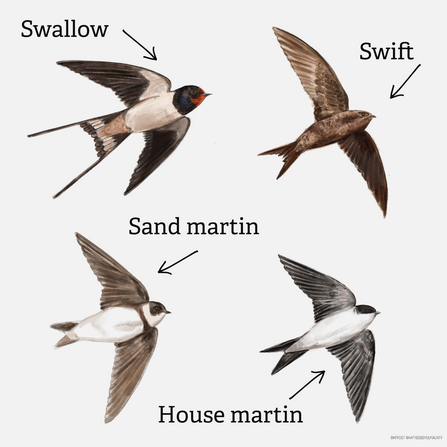Since 2013, our colleagues across The Wildlife Trusts have partnered with the Royal Horticultural Society (RHS) on our Wild About Gardens initiative – encouraging everyone with a garden to provide food and shelter for wildlife or to offer a safe space for wildlife to pass through. 90% of UK households have a garden - that's over 20 million gardens with a larger surface area than the 2300 nature reserves that Wildlife Trusts across the country manage. Even if you don't have a garden, you can do your bit to help our struggling wildlife - from window boxes to bee bricks or containers of wildflowers on a balcony.
This year, the focus of Wild About Gardens are our high-fliers - the house martins, swallows, swifts and sand martins that zoom through the air. These wonderful birds rarely touch the ground but are on their way to spend their spring and summer with us. Swifts and house martins, once familiar to so many of us, were recently added to the UK's Red List for birds, which means that they've suffered severe declines and require urgent action to help them. It is estimated, for example, that almost 60% of UK swifts have disappeared over the last 25 years.
Huge declines of insects, habitat loss and the impacts of climate change – with extreme weather affecting breeding cycles and migration – are the main challenges affecting migratory birds like these. There are things that almost all of us can do to help with the first two issues and, by changing some of our habits, we can also help with the longer-term impacts of climate change.
- You've probably heard it before but one of the easiest things you can do to help wildlife, including our high-flying summer visitors, is be lazy! If you're lucky enough to have a garden, set aside a patch of grass to grow long - this will encourage insects in your garden - an important source of food for these amazing birds.
- If you've got a flower-border (or patio tubs or window boxes), you can plant this up with insect-friendly flowers.
- If you've got a bit more room, why not create a boggy garden patch that will not only support insects but will also provide mud for swallows and house martins to take to help with nest construction.
- If you've got a little less room, what about adding a house martin nest under your eaves or a swift box or brick if you're able to site it at least five metres above the ground?






